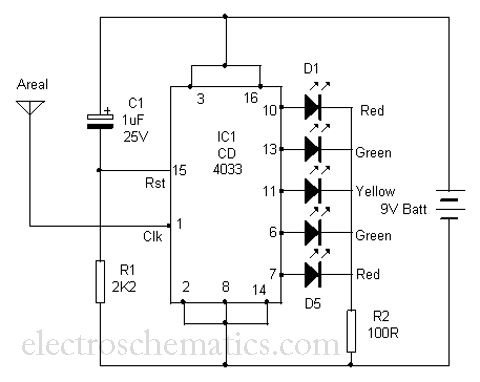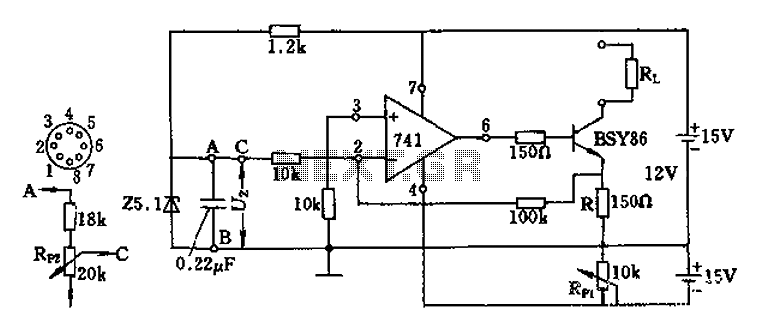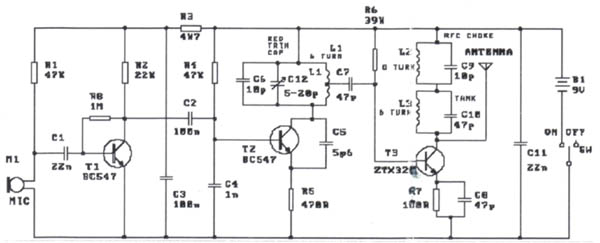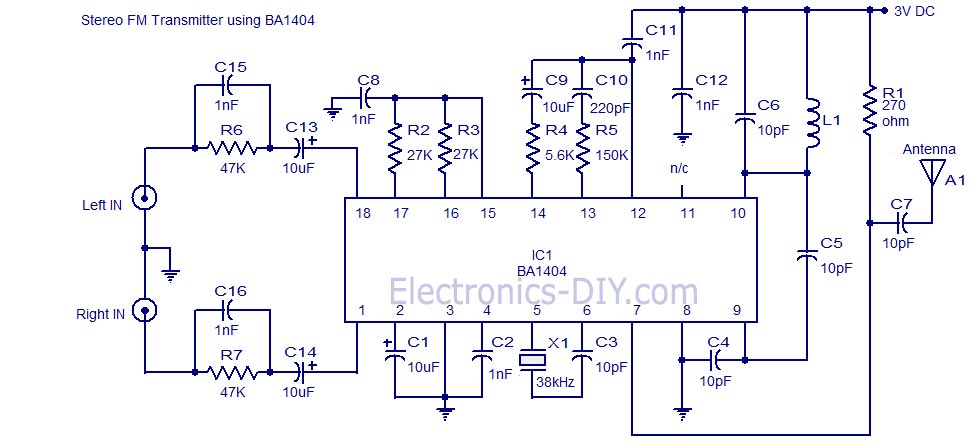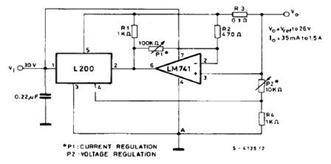
4-20mA Current Loop Bridge Sensor Transmitter
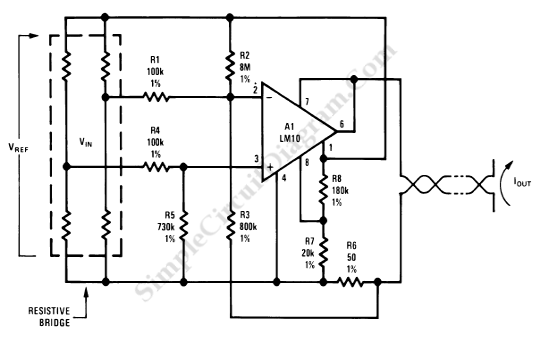
Bridged resistive sensing elements are commonly used in resistive type sensors and transducers. This type of sensor requires a biasing voltage to operate. The LM10 provides low...
Bridged resistive sensing elements are integral components in various resistive sensors and transducers, widely utilized in applications that require precise measurement of physical quantities such as temperature, pressure, and displacement. These sensors function based on the principle of resistance change in response to external stimuli.
To operate effectively, bridged resistive sensors necessitate a biasing voltage, which establishes a reference point for accurate readings. The LM10, a precision voltage reference and operational amplifier, is often employed to supply this necessary bias voltage. The LM10 is characterized by its low offset voltage, low noise, and high input impedance, making it suitable for enhancing the performance of resistive sensors.
In a typical configuration, the bridged resistive sensing element is arranged in a Wheatstone bridge format, which allows for the detection of small changes in resistance. When an external stimulus is applied, the balance of the bridge is disturbed, resulting in a measurable voltage difference across the bridge output. This voltage can then be amplified by the LM10 to provide a clearer signal for further processing.
The integration of the LM10 in the circuit ensures that the biasing voltage remains stable, thereby improving the accuracy and reliability of the sensor readings. Additionally, the low power consumption of the LM10 makes it an excellent choice for battery-operated devices, where efficiency is paramount.
Overall, the combination of bridged resistive sensing elements with the LM10 operational amplifier creates a robust sensing solution suitable for a wide range of industrial and consumer applications, enhancing measurement precision and operational efficiency.Bridged resistive sensing elements is common in resistive type sensors/transducers. This sensor type need a biasing voltage to operate. LM10 provide low.. 🔗 External reference
Bridged resistive sensing elements are integral components in various resistive sensors and transducers, widely utilized in applications that require precise measurement of physical quantities such as temperature, pressure, and displacement. These sensors function based on the principle of resistance change in response to external stimuli.
To operate effectively, bridged resistive sensors necessitate a biasing voltage, which establishes a reference point for accurate readings. The LM10, a precision voltage reference and operational amplifier, is often employed to supply this necessary bias voltage. The LM10 is characterized by its low offset voltage, low noise, and high input impedance, making it suitable for enhancing the performance of resistive sensors.
In a typical configuration, the bridged resistive sensing element is arranged in a Wheatstone bridge format, which allows for the detection of small changes in resistance. When an external stimulus is applied, the balance of the bridge is disturbed, resulting in a measurable voltage difference across the bridge output. This voltage can then be amplified by the LM10 to provide a clearer signal for further processing.
The integration of the LM10 in the circuit ensures that the biasing voltage remains stable, thereby improving the accuracy and reliability of the sensor readings. Additionally, the low power consumption of the LM10 makes it an excellent choice for battery-operated devices, where efficiency is paramount.
Overall, the combination of bridged resistive sensing elements with the LM10 operational amplifier creates a robust sensing solution suitable for a wide range of industrial and consumer applications, enhancing measurement precision and operational efficiency.Bridged resistive sensing elements is common in resistive type sensors/transducers. This sensor type need a biasing voltage to operate. LM10 provide low.. 🔗 External reference
Warning: include(partials/cookie-banner.php): Failed to open stream: Permission denied in /var/www/html/nextgr/view-circuit.php on line 713
Warning: include(): Failed opening 'partials/cookie-banner.php' for inclusion (include_path='.:/usr/share/php') in /var/www/html/nextgr/view-circuit.php on line 713
